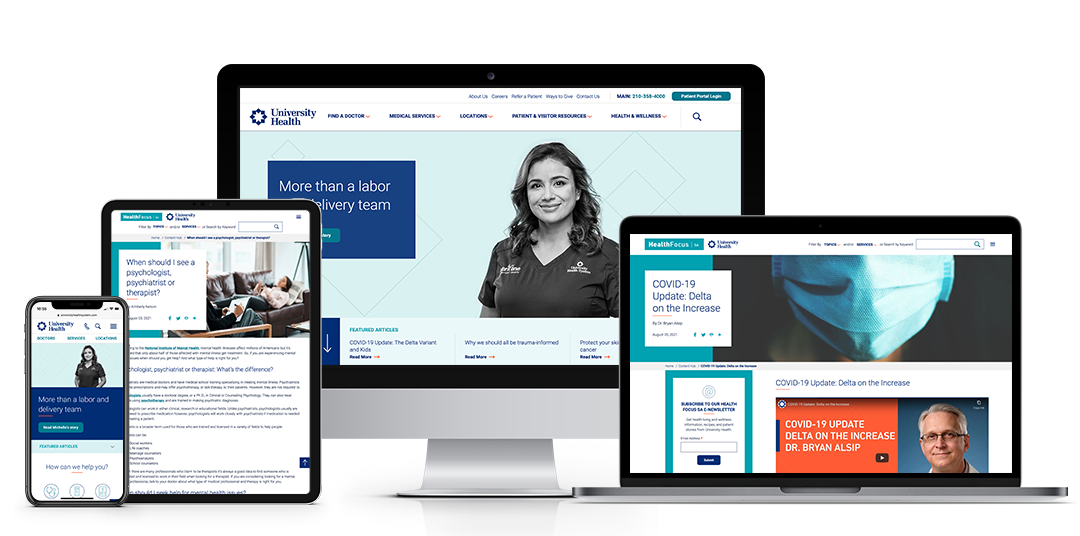Optimize your Sitecore digital experience for evolving needs of healthcare.
Ensure your investment in Sitecore works for the unique needs of your organization and your key audiences. Let’s discuss your strategic and digital experience needs so you get the most value from your Sitecore investment.

Geonetric brings the healthcare expertise you need
 User Experience Strategy
User Experience Strategy
Deliver more meaningful digital experiences with the Sitecore Experience Platform™.
- UX Audits
- UX Strategy
- UX Research & Usability Testing
- Personalization Strategy
 Design & Content Strategy
Design & Content Strategy
Bring your brand to life with user-focused design and content.
- UX Design
- Visual Design
- Content Strategy & Development
 Website Optimization
Website Optimization
Refine your site and grow the value of your investment in Sitecore.
- UX Research & Usability Testing
- Search Engine Optimization ( SEO)
- Personalization & Optimization Strategy
Sitecore resources from our experts

5 Steps to Winning Personalized Experiences
Build better user experiences with this proven five-part personalization framework.

Why Healthcare Organizations Choose Sitecore
Learn why health systems are switching to Sitecore CMS to help them deliver optimized digital experiences that align with patient journeys.

